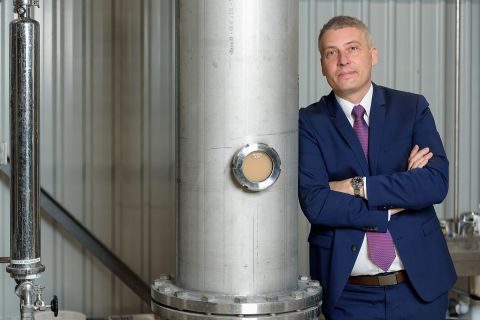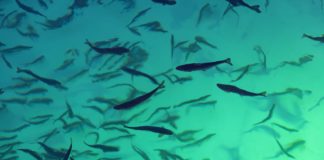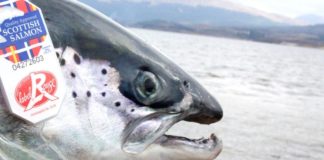Earlier this month Mitsubishi Corporation – owners of the world’s third largest salmon farmer Cermaq – invested and partnered in Unibio. The company’s technology can convert methane into protein using ‘methane-eating” microbes”. The Japanese giant believes that it can do so on a commercial, and potentially, unlimited scale.
The U-Loop fermenters are huge, with its 35 m high reactors towering over workers. Its first full-scale plant in Russia was built for Protelux, Unibio’ first licensee.
Horizontal design
“One of the reasons we are working with the horizontal design – is that once we build something high, we get something for free which is the added static pressure and the higher the pressure in the reactor, the smaller the gas bubbles – and the smaller the gas bobbles – and the more bubbles you have – the larger the total surface area of the gas and the more of the carbon can be accessed by the bacteria, “ said Unibio CEO Henrik Busch-Larsen to SalmonBusiness.
“This gives high productivity and good feasibility in the technology,” he added.
How easy is it to make?
“It’s been quite difficult to get where we are today. This is not an easy process to control. There is a lot of science, and a lot of trial and error behind it, it’s been quite a challenge – which is good and bad,” he said.

Cermaq
Difficult though it may be, the Dane caught the eye of the Japanese powerhouse Mitsibushi – owners of the third largest salmon farmer in the world, Cermaq. The salmon farmer produced 145,200 tonnes of salmon in 2018. SalmonBusiness has contacted Cermaq to find out when they plan on adding Unibio’s concentrated protein product Uniprotein to its feed operations.
Mitsibushi said Unibio was company which was closest to commercialisation and full scale operations.
“Mitsibushi approached us. I believe they saw us as the nexus between energy and feed, especially in aquaculture. Unibio can lean against a company with a lot of synergies and look at their 10 business groups and we will go out and do things globally together,” he said.

How much does it cost to produce vs salmon feed?
“I can’t comment on the cost of production – but can say we will be benchmarking against the premium proteins in the market – also price positioning against those products.”
Salmon feed
“This is clearly our expectation – that this product will end up in salmon feed – and a lot of the research has been done – aimed on products aimed at salmon feed. Also, in terms of nutrition, That is the expectation also – that we can do things better when compared to soy”.
Is it all just hot air or genuinely an infinite source of feed? What is the potential here?
“If you are looking at the abundance of the methane gas and biogas, you will have almost an infinite amount of methane available. One of the potentials is that you can access the associated gas being burnt today on a global scale and then capture it and use it for your production for proteins.
“I would consider this a disruptive technology because of the amount of methane available – agains to what is driving the market for proteins – this is an opportunity to produce an unlimited amount of protein,” he concluded.










